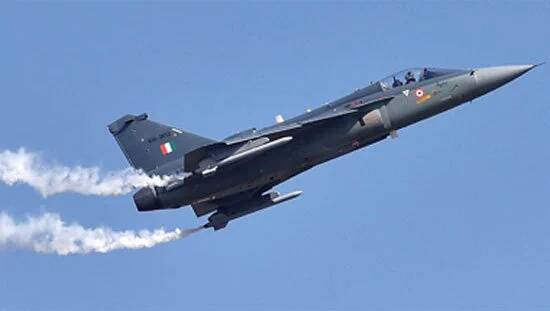LCA Tejas: Still a long way to go for IAF Fighter Jet
Shares

ISLAMABAD: India inducted the indigenously built Light Combat Aircraft Tejas in its Air Force after 33 years of long and daunting process marred with delays and incompetences.
The aircraft has been a long time coming and truth be told that there is a still some distance to go before the Tejas dons the mantle of a full-fledged combat worthy fighter aircraft.
Tejas - "Radiance" - entered service with the Indian Air Force when the first two light combat aircraft donned the crest of Number 45 Squadron, "The Flying Daggers"
Tejas has had a long history since 1983 when the project was first sanctioned to design and build a technology demonstrator, and a sum of Rs 560 odd crores was earmarked.
After a particularly long design phase, money was sanctioned for the commencement of work on a full scale engineering demonstrator in 1993, and thereafter, the monetary sanctions kept coming as the first technology demonstrator flew on January 4, 2001.
From that day, it took 12 years for the initial operational clearance to be granted in December 2013. The final operational clearance, which was scheduled for 2014, is yet to be obtained and would hopefully come about before the Tejas Mk1A is inducted in to the IAF.
However there are still a long list of the challenges which are faced by the Indian Air Force before the Tejas becomes the full fledge operational fighter jet of the Indian Air Force.
The first is to ramp up the production at HAL so that the apology of having a squadron with two aircraft is done away with quickly.
While the two inducted machines can be used to work up procedures and SOPs as well as train more pilots, the fact is that squadron spirit builds up with flying and more flying, armament range work and participating in exercises – one can hardly do that with two aircraft.
The production capability of HAL is quoted to be eight aircraft per year - hopefully it is so, and one is cynical due its demonstrated track record, which HAL must buck; sixteen aircraft per year is the norm worldwide, and HAL must be held to its statement of attempting that.
Even as production is ramped-up, the development of Tejas Mk1A must proceed in parallel, as it is this version that the IAF desires – 100 aircraft in number.
The four mandatory requirements of incorporating a beyond-visual-range missile, air-to-air refueling capability, a modern electronic warfare suite, and above all, an Active Electronically Scanned Array (AESA) radar are tasks that require focused R&D, testing and production.
A squadron’s combat capability can only be as good as the number of machines available on the flight line. It is here that HAL has to really turn a new leaf as adequate and timely product support has not been its forte, especially for newly inducted systems.
It is no secret that the availability of the Dhruv fleet (advanced light helicopter) in the services was poor due to logistics not being in place. The repair and overhaul facilities were inadequate and helicopters sent to HAL for servicing remained unavailable for periods extending up to seven to eight months as a routine. The Tejas must not go through the same treatment.
Tejas has more than one third of the imported parts including the engine which is being imported from USA. The continuous availability of the parts and the engine in future would only be confirmed when the time would come as apparently at this stage there does not seem any problem in the imports from either EU or USA.
And finally, the bickering about variations in IAF’s requirements must stop. The air staff requirements have generally remained unchanged, in fact scores of deletions and concessions have been accorded.
The armament requirement would certainly undergo a modification, as a warfighter in the 2020s cannot be expected to fight with equipment desired in the 1980s, when the requirements were first drawn up.
The fast-changing world of warfare demands dexterity from our R&D and manufacturing establishment. It is a challenge that our scientists have to accept – the Indian warfighter looks up to them to stay potent.
